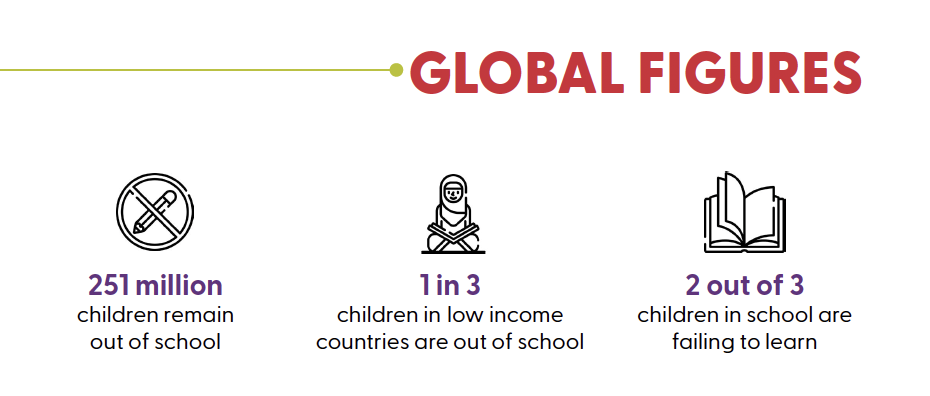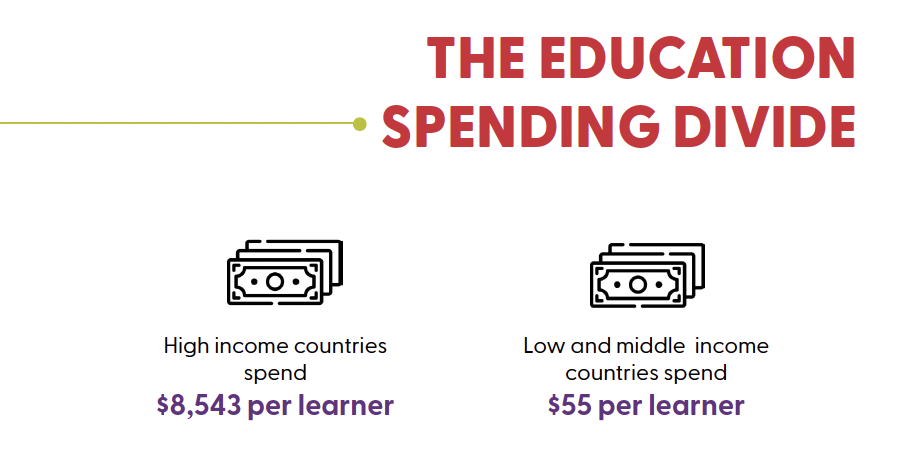Education is not a privilege—it is a fundamental right for every child. Yet, for millions worldwide, this right remains unfulfilled. The journey to receive any education and meaningful learning is fraught with barriers.
A worrying report from UNESCO published in October 2024 revealed that global efforts to ensure universal education have plateaued, with the out-of-school population reducing by only 1 per cent in nearly 10 years and 251 million children remaining out of school. Although 110 million children have entered school since the adoption of the SDGs, disparities remain persistent. According to the report, in low-income countries, 33 per cent of school-aged children and youth are out of school, compared to just 3 per cent in high-income countries.
Beyond the millions of children who are out of school, over 600 million struggle to attain even the most basic proficiency in reading and mathematics. Shockingly, two-thirds of these children are already enrolled in school but are still failing to learn.

The reasons behind this crisis are complex. Poverty remains one of the most persistent barriers, depriving children of access to education. Those living in economic hardship, conflict zones, or areas affected by natural disasters are at the highest risk of being excluded. Children with disabilities and those from ethnic minority backgrounds face additional challenges, while in some regions, entrenched gender inequalities further limit educational opportunities for girls. The growing digital divide exacerbates the situation—most school aged children globally lack internet access at home, restricting their ability to learn beyond the classroom. Even for those who do attend school, learning is not guaranteed. Many schools suffer from severe resource shortages, including untrained teachers, insufficient educational materials, and deteriorating infrastructure. Some children arrive at school hungry, unwell, or exhausted from household responsibilities, making it difficult to focus on learning.
At the same time, the disparity in education spending is striking, with a UNESCO-World Bank report revealing that high-income countries invest $8,543 per learner, while low- and middle-income countries manage only $55 per student.
The situation is further complicated by debt burdens. According to the report, in Africa, countries now spend almost as much on debt servicing as they do on education, while global education aid has declined.
 The consequences of these educational inequities are profound. Without access to quality education, children face lifelong barriers to employment and economic stability. They are more vulnerable to ill health and have fewer opportunities to influence the decisions that shape their futures, limiting their ability to contribute meaningfully to their communities.
The consequences of these educational inequities are profound. Without access to quality education, children face lifelong barriers to employment and economic stability. They are more vulnerable to ill health and have fewer opportunities to influence the decisions that shape their futures, limiting their ability to contribute meaningfully to their communities.
That’s why we and our delivery partners work tirelessly to bridge this gap. From building schools and providing books to improving teaching quality and tackling deep-rooted attitudes towards education, the initiatives in this report make a tangible difference. We are proud to work in partnership with Education Above All, driving real change for children who need it most.










